Hal Jordan must face both Sinestro and a growing midlife crisis in Green Lantern #3
Interview | Jeremy Adams on finding the humanity in Hal and why Sinestro is more dangerous than ever
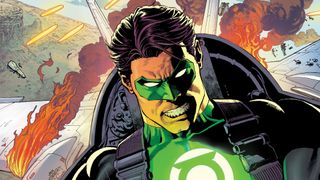
With the Knight Terrors arc having come to a close, the heroes and villains of the DC universe are trying to pick up the pieces of their lives. For Green Lantern Hal Jordan, that means acclimatizing to life on Earth and the fact that his former girlfriend Carol seems to have moved on. Meanwhile Sinestro, possibly the most pivotal figure in Hal's world, is back and more deadly than ever.
The current run of Green Lantern, by writer Jeremy Adams and artist Xermanico, is focused on reigniting the core essence of Hal Jordan's character. The third issue is published by DC Comics today and in this exclusive interview with Newsarama, Adams delves into the constraints encircling Hal, his turbulent journey so far, looking back on the Silver Age, and the threat posed by Sinestro.
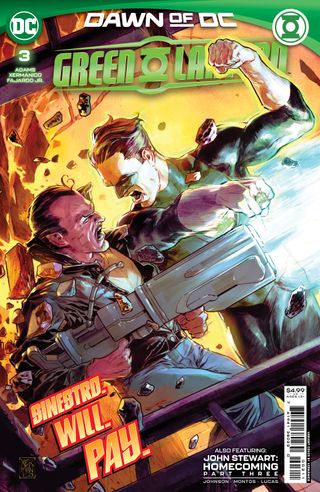
Newsarama: We're coming out of Knight Terrors now and we're getting a bit of "how Hal Jordan got his groove back." You're also reestablishing the major players within his mythos, such as Sinestro. How does he fit into what you're doing?
Jeremy Adams: Somebody said to me the other day, "It feels like you're doing an origin story without doing an origin story." I'm not necessarily retreading the past, but I'm bringing up a lot of touchstones in the opening salvo [that are similar to] Silver Age Hal Jordan.
Sinestro is an important part of Hal Jordan's story, but Sinestro's story is actually totally distinct from what's going on with Hal. There's a lot going on in the universe at large that we're going to uncover as the issues unfold. But for right now, spinning out of Knight Terrors, what Alex Segura did so well is hint at the fact that you are dealing with a Sinestro that is not on Korugar and not running a planet, and is a little off-kilter at the moment, which sets him up to be a little more dangerous.
You don't want to keep a tiger in a cage. I feel like Sinestro is that type of person. It's like, "Hey, I'm going to give you guys a chance to let me do this thing, and if you're not going to let me do this thing, I'm going to have to do something really bad." So Sinestro's frustration about being on Earth is evident. And his plan to leave Earth is starting to reveal itself right now.
There are a lot of mysteries in this series. There are a lot of hints that [Hal's ring] is not a normal ring. This is not a ring with an AI. It does not talk to him. It does not translate things for Hal, but it can do some things that he was able to do in the Silver Age. It's limited. He hasn't had to charge it. He can't seem to leave Earth. There's a lot of pieces to that puzzle that will lead down the road to another mystery. I have a lot of mystery boxes waiting to be opened, but I'm not going to drag this out for 12 months or anything.
Comic deals, prizes and latest news
Get the best comic news, insights, opinions, analysis and more!
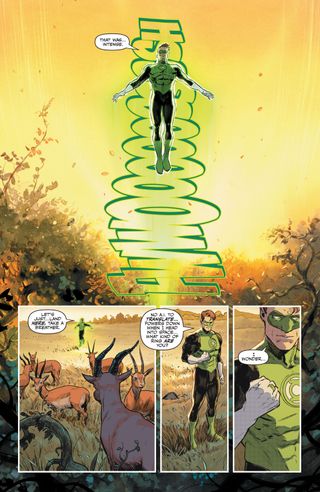
You mentioned limitations there. Is having those limitations key to trying to tell a new Hal Jordan story? And is that reflected in Sinestro's story as well?
Yes. It's weird, when they asked me to take over Green Lantern, they were like, "Well, we want to do something kind of Earth-centric." So I needed to put some guardrails and some constraints, which fit perfectly into the story I wanted to tell. And it led to what I think is going to be a really cool moment, at least for this nerd, that only three other people will get down the road. But I love the idea that he can't leave.
It forces my hand a little bit, and it also has given me the perspective of writing Hal as a person that has come back home, somebody that was a hero out in the field, but a lot of people don't know what he did there. And here's this guy that probably has $13 in his bank account and stays in a crappy trailer on the edge of town, and the girl he loves is moving on. It makes him a little more human.
For me, Hal has always been a bit of a cipher. He's been this tough guy just running into danger. For me to write him the way that I want to write him, I want to kind of explore his humanity a little bit. Why is he fighting for this stuff out there? Why is he guarding Sector Two? What is worth guarding?
I think he's had that realization too. There's a little bit of this midlife crisis that's happening with Hal. The DC universe has been orienting itself toward looking at the sidekick characters, the next generation of heroes, whether it's Nightwing or the Titans. There's an element of, "well, what's happening with these other characters? What's happening with the old guard?" They're watching this happen.
So it gives us a moment to pause and take a breath and think about who these guys are as humans. And I'm really being intentional in that because I want people to like Hal, and I want people to like Hal because when we start getting into broader stories, then I think they'll come along with me. Because they'll know who that character is, rather than just a cookie-cutter character that could be anybody.
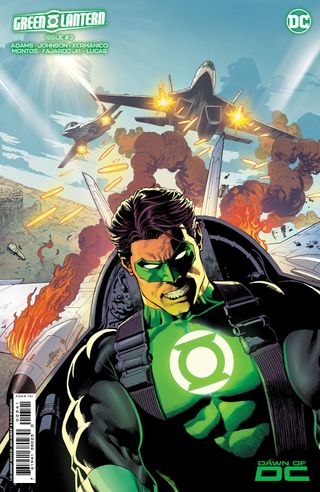
We spoke with Phillip Kennedy Johnson about Green Lantern: War Journal and one of the things that he said was that John Stewart is the best guy for the job, but he treats it like a service that will be fulfilled, and one day he will stop doing it. Hal has always been such a larger-than-life character. But now for Hal, it's exactly like you said - it's a midlife crisis. He has the ring again, but it's not the same as it used to be. How does he get that juice back?
Yeah, I agree with you. I mean, listen, it's kind of a weird direct response to the character of the past 20 years. There are such big stories and such epic tales and such cosmic adventures being told. I can't compete with that. The only thing I can do is go small right now and try to get everybody invested in him as a person, so that when we go big, we can tell different tales. It's important to care about the characters so when they go on these adventures that you're along with them.
There are so many people that are just like, "Oh, I hate Hal Jordan." My job is to make Hal interesting enough to stick with it, and that you'll want to cheer for him, because there's a reason he's the "best". But right now he's struggling a little bit. And there's a lot of mysteries happening, swirling around him, too.
We have Sinestro back. The Manhunter suit has shown up. We've got the Demolition Crew. Who else do we have coming down the pike? Are we digging into the back issues to find some more earthbound threats for Hal to face?
Yes, because you want to find interesting stories to tell with the villains, too.
I think the issue I'm having right now is that we have this big Sinestro story brewing, and then there's this larger story looming outside in space about the United Planets and what's going on that is going to encroach upon Hal Jordan. But there are some big links to Hal Jordan's past that are going to show up. There are weird Easter eggs to DC's past that I'm going to place in this thing, which will be interesting as well. Then Phillip and I have some plans for next year that are really fun and really exciting when it comes to Sector 2814.
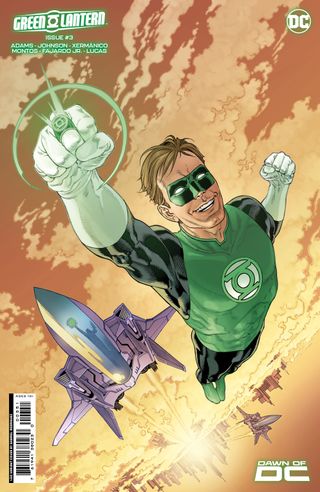
Awesome. I know you didn't write the backup with Sinestro in the Knight Terrors issues but as you're writing Sinestro in the mainline book, how are you balancing all of that continuity? It's a pretty tangled knot.
Yeah, it is. But Alex (Segura) and I talked about it beforehand. It really sets up mentally where Sinestro is. By the end of that, he knows what he needs to do. At least, he thinks he knows what he needs to do. Sinestro is a very complicated character. Post-Dark Crisis, we don't know exactly what's going on. We know where he was, which really informs where he is now.
Knight Terrors is him having to look inward and see what he needs to do to become the man that he thinks he is. It's going to start him down this road that could cause a lot of trouble for Earth. I don't want to spoil too much, but it is complicated. All of it's complicated because he's a character that's been around for ages and everybody's written him differently. I'm trying to write him as this very logical guy that knows how to instill fear in people, and not one to be trifled with. But I always feel like he's not necessarily emotional about everything. I always felt like he was very reserved in the way that he was willing to annihilate planets or whatever in order to get justice.
So I think we see a crack in that emotionally, and the emotional spectrum in general... At the end of Geoff Thorne's run the Green Lantern power battery was gone, and there was a giant ball of source, and some people turned into other Lanterns. So that's out there, and what that could possibly mean is looming out there, too.
How has it been working with Xermanico? How has that process been?
It's amazing. I had worked with him on Flashpoint Beyond with Tim Sheridan and Geoff Johns, and his work is impeccable. I am coming to the realization that there's really nothing I can throw at him that he can't do.
I think at the end of his tenure as an artist in comic books, we'll all be like, "Holy cow, he is one of the best." Because he just keeps getting better and better, and the acting he's able to do with facial features is something that surprises me. I'm like, "Oh, wow. You can actually create emotion with a face," which not everybody can do. So it's really remarkable.
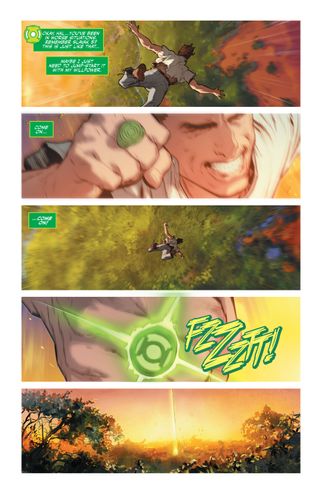
Yeah, I was very struck by his panel choices and his handle on pacing. This is visual storytelling done really well and honestly, even if you hadn't had to put any words to it, it’s easy to understand what's going on.
I'm always ruining the page with words. [laughs] Very early on, Geoff Johns and I were talking about giving Xermanico space to just be him. I get really itchy at five panels. I'm like, "I want him to have space." And then he'll come back and go, "I added seven panels. I hope it's okay." I'm like, "As long as it's your idea, dude, that's fine."
It is a visual art form. If I was an artist and I got a script and all it is is people talking, I'd be like, "Oh, just shoot me." This would be terrible. I want to give him something fun to draw. Something fun, and then he pluses it. He'll go, "What if we did this instead?" It's like, "Yes, whatever you want, sir." So I'm thrilled, thrilled, thrilled.
With Green Lantern also, you have the most fun thing to do, which is coming up with the constructs, right?
It's both fun and intimidating. Because you're like, "Okay, I got to figure out a different way to do this, because everybody's done it for years and years." So even Hal doing the fake ghosts in issue two was like, "Okay, can we do this? I don't know if I've seen that. This will be fun." So I'm trying to think of new ways to use constructs.

Are we going to see some sort of construct power-up that we've never seen before?
In #3, you will definitely see the fact that he can do some things with his constructs he hasn't been able to do since the Silver Age. And then in #4 you will see some interesting ways of using constructs. And then #5, let me just say that he does a really cool thing with the constructs that can only be done in comic books.
We're pretty much almost out of time. I asked Philip this as well, since John is his guy. Is Hal Jordan the best Green Lantern? It's bit of a trap question.
I know, I know. This is the thing. I think Hal is the best Green Lantern, but my favorite Green Lantern is probably Guy Gardner. I love Justice League International so much. He always reminded me of Dennis Leary with a ring.
Is there anything that you want to make sure that our readers know?
No. Just buy the book!
Green Lantern #3 is out now from DC Comics.
These are the best Green Lantern stories of all time.
Pierce Lydon has been a contributor to Newsarama for over 10 years, writing everything from reviews to deep dive explainers, to interview pieces and best lists.
Most Popular


